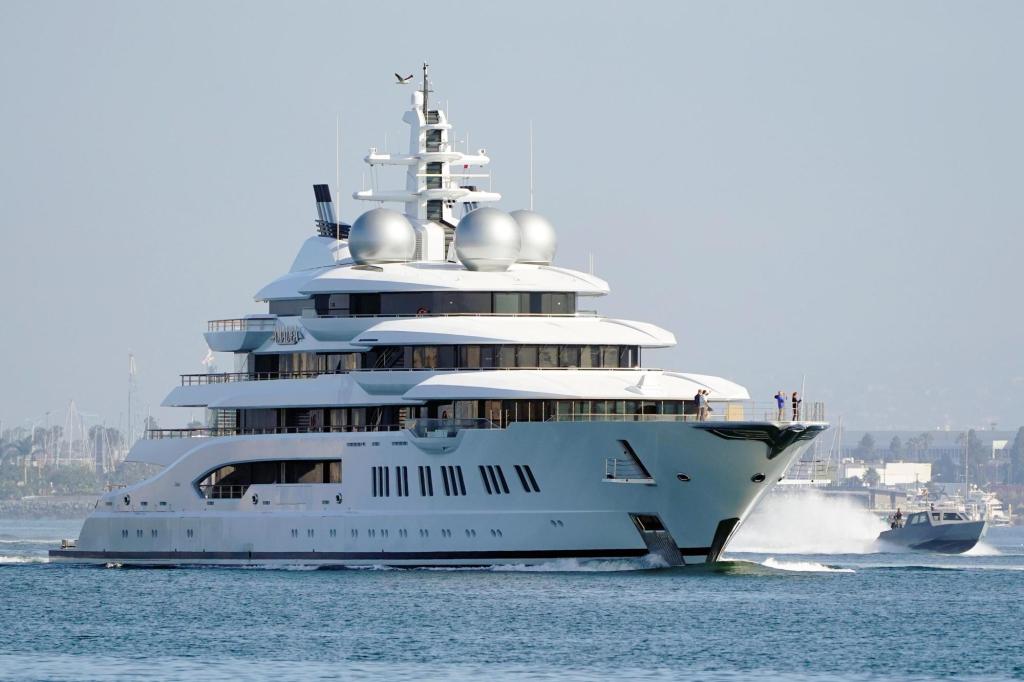The Amadea was seized three years ago and is docked in San Diego.
Why it matters
- The ongoing legal battle over the Amadea highlights the U.S. government's commitment to enforcing sanctions against Russian oligarchs.
- The yacht's seizure underscores the broader implications of international law and asset recovery in the context of geopolitical tensions.
- The case raises questions about the future of luxury assets owned by individuals under sanctions and the potential for legal precedents.
The luxury superyacht Amadea, which has been under U.S. custody for the past three years, is currently docked in San Diego as the legal proceedings surrounding its ownership continue. The vessel, estimated to be worth over $300 million, was seized in May 2022 as part of the U.S. government's efforts to target the assets of wealthy Russians following the invasion of Ukraine. This high-profile case has captured the attention of both legal experts and the public, not only for its value but also for what it represents in the context of international sanctions and asset recovery.
The Amadea is believed to be owned by Suleiman Kerimov, a Russian oligarch with close ties to the Kremlin. Kerimov has been under U.S. sanctions since 2018, and the seizure of the yacht marks a significant step in the enforcement of these restrictions. The U.S. Department of Justice has made it clear that they are committed to pursuing the assets of individuals who are seen as undermining global security and stability.
As the legal battle unfolds, questions have emerged regarding the processes involved in determining the rightful ownership of the yacht. The Department of Justice has stated that it will continue to pursue the case against the Amadea, which has become emblematic of the U.S. government's broader strategy to hold Russian elites accountable. The complexity of the case is compounded by the intricate web of offshore companies and trusts often used by oligarchs to obscure their ownership of luxury assets.
In a recent court hearing, attorneys representing the government argued that the evidence clearly points to Kerimov as the beneficial owner of the Amadea. They have emphasized that the yacht is not merely a luxury item but a symbol of the wealth and influence that many Russian oligarchs wield, often at the expense of ordinary citizens.
On the other hand, the defense team for Kerimov has contested these claims, asserting that the ownership structure of the yacht is legitimate and that the seizure is an overreach of U.S. law. They argue that the yacht was acquired through lawful means and that the actions of the U.S. government are politically motivated rather than based on solid legal grounds.
The implications of this case extend beyond the Amadea itself. It raises critical questions about the future of high-value assets owned by individuals who are sanctioned or deemed to be acting against international norms. The outcome of the Amadea's legal battle could set a significant precedent for how similar cases are handled in the future, potentially impacting the luxury market and the strategies employed by wealthy individuals to protect their assets.
Meanwhile, the Amadea remains docked in San Diego, where it has become somewhat of a curiosity. The yacht boasts extravagant features, including multiple decks, a swimming pool, and accommodations for numerous guests, making it a prime example of luxury on the high seas. However, for now, it serves as a reminder of the ongoing geopolitical strife and the lengths to which governments will go to enforce sanctions and recover assets.
As the legal proceedings continue, the world will be watching closely to see how this case unfolds and what it means for the broader landscape of international law and sanctions enforcement. The fate of the Amadea may very well reflect the changing dynamics of global power and the ongoing efforts to hold those responsible for geopolitical tensions accountable for their actions.











